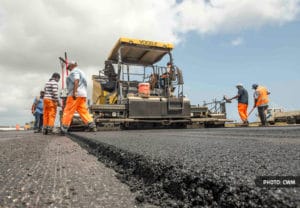

ESAT News (August 28, 2017)

The illegal dumping of toxic along Ethiopia’s road construction routes is resulting in higher rates of child mortality and increased rates of diseases associated with exposure to toxins, according to early research by economists at Queen Mary University of London (QMUL) and Trinity College Dublin (TCD).
The researchers were able to link increased rates of death and disease known to be associated with the effects of exposure to toxic waste and the construction of new roads, according to a QMUL news published last week.
“The research shows that an additional road built within five kilometres increases the probability that a mother experiences an infant death by three percentage points from 8.5 per cent to 11.5 per cent The research team also found that children under the age of five living near a recently built road have a lower level of haemoglobin in the blood and are more likely to suffer from severe anaemia,” the summary of the study shows.
The research focused on roads constructed along the corridors connecting the capital Addis-Ababa to the neighbouring countries (Djibouti, Somalia, Eritrea, Sudan and Kenya) and shows that the results only hold along two main routes connecting Ethiopia to Somalia and Djibouti.
The researchers based their investigation on the premise that road construction sites provide an ideal opportunity for the illegal disposal of toxic waste. They argue that the embankments and the sites set up during the digging phase provide a suitable place for dumping, and that newly built roads make previously remote areas more accessible and susceptible to dumping.
The study is published as a Trinity Economics Paper by Dr Caterina Gennaioli from QMUL’s School of Business and Management and Dr Gaia Narciso from TCD’s Department of Economics.
“The evidence presented in the paper recommends that infrastructure development, particularly road constructions, should, at least, be accompanied by actions aimed at preventing illegal toxic waste disposal, especially in regions with weak institutions and a strategic geographical position,” says Dr. Gennaioli.